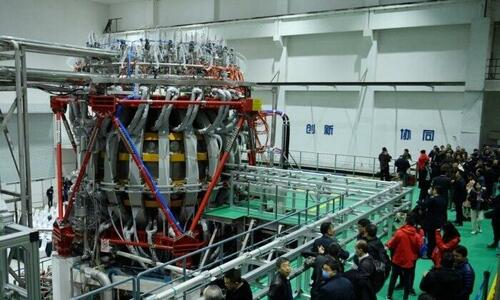Share the post "US-China Nuclear Fusion Race: The Battle For Energy And Military Dominance.."
The United States and China are locked in a high-stakes race to build the world’s first grid-scale nuclear fusion power plant, a competition that could shape the future of energy in the 21st century—and potentially equip the Chinese Goverment (CCP) with the most advanced weapons ever imagined…
A fusion reactor is a device designed to generate energy by replicating the same nuclear process that powers the sun—fusing light atomic nuclei, such as hydrogen, under extreme heat and pressure. Unlike nuclear fission, which splits atoms to release energy, fusion produces no greenhouse gases and generates far more power with minimal long-term radioactive waste.
The potential of fusion energy is revolutionary; it could provide virtually limitless, carbon-free power and reshape global energy markets. Fusion, often called the “holy grail” of clean energy, produces immense power without greenhouse gas emissions or long-term radioactive waste, potentially becoming a $1 trillion market by 2050.
The United States first harnessed fusion in the 1952 hydrogen bomb test, but controlling plasma for power generation has remained a challenge. While private U.S. investment in fusion startups has surged past $8 billion—backed by major companies like Amazon, Google, and Meta—China dominates in public funding and reactor construction. Beijing invests about $1.5 billion annually in fusion, more than any other nation, and nearly double U.S. federal spending, according to the U.S. Energy Department’s Office of Fusion Energy Sciences.
China has taken the lead in fusion-related patents, produces 10 times more Ph.D. graduates in fusion science, and is aggressively securing critical materials such as superconducting magnets, specialized metals, and semiconductors. China’s aggressive approach includes rapid reactor construction and experimental designs that may not be viable under U.S. regulations.
Satellite images from Planet Labs reveal China’s construction of a massive laser-fusion site in 2024. Set in the Mianyana mountains, in southwestern China, the facility features a containment dome twice the size of the U.S. National Ignition Facility. Experts suggest this could be a fusion-fission hybrid, a model more feasible under China’s state-controlled system.
The nation that first achieves commercial-scale fusion will control a critical pillar of the global economy. U.S. senators and fusion experts are calling for a $10 billion federal investment to maintain leadership, but with government downsizing under Trump’s second term, future funding remains uncertain. If China wins the fusion race, it could dominate the future energy market, much as it has with solar panels, electric vehicle batteries, and rare earth minerals.




